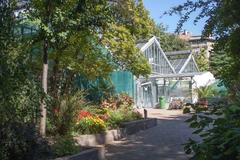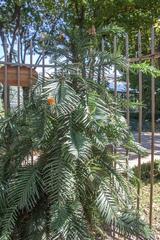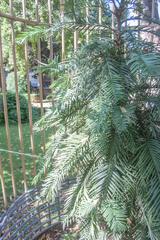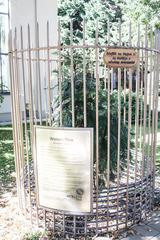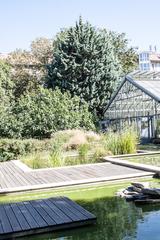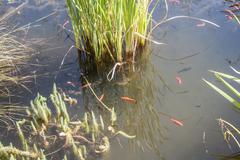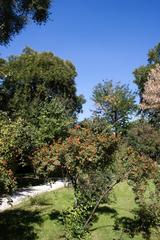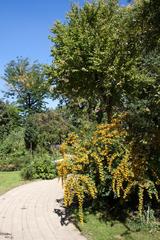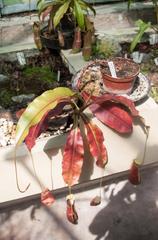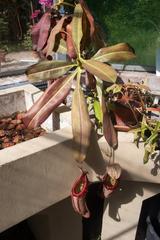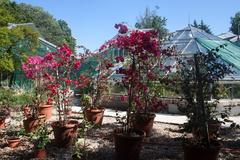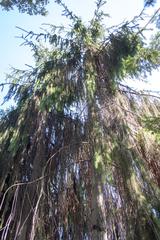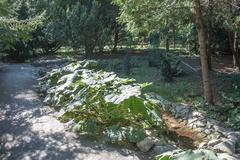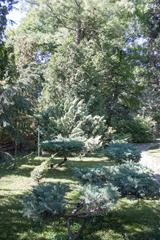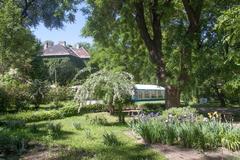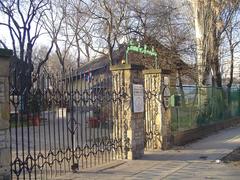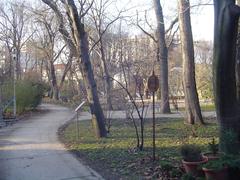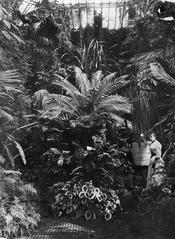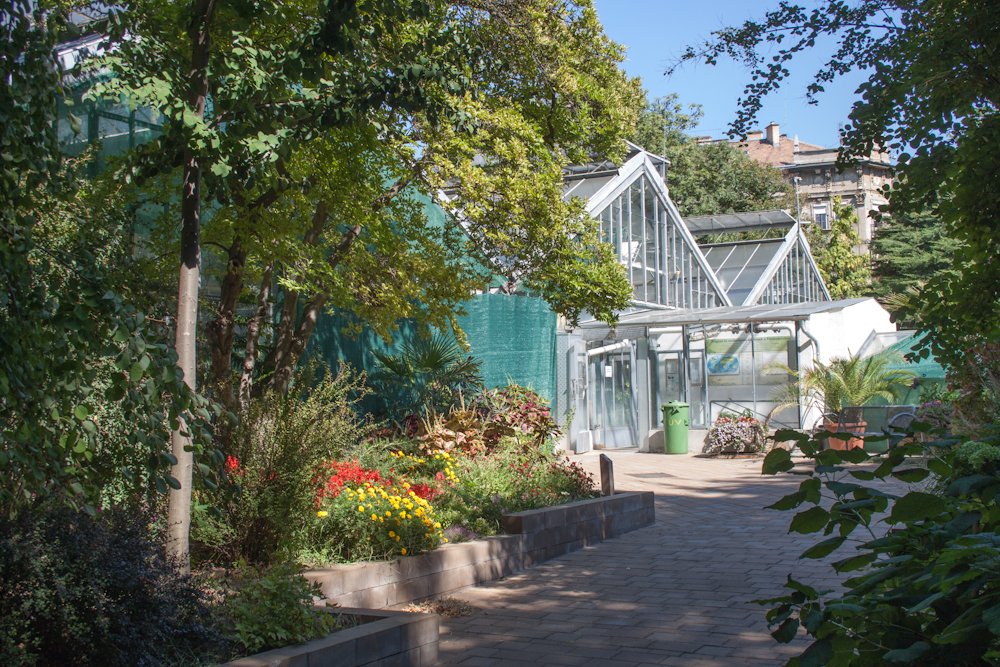
Botanical Garden Budapest: Visiting Hours, Tickets, and Guide to Historical Sites
Date: 14/06/2025
Introduction: Füvészkert Botanical Garden—Budapest’s Green Heritage
Budapest, the lively capital of Hungary, is home to remarkable green spaces that unite botanical richness and cultural heritage. Among these, the Füvészkert Botanical Garden stands as Hungary’s oldest botanical institution and a living showcase of global plant diversity, located in the heart of the Józsefváros district. Established in 1771, Füvészkert has transformed from a university-affiliated medicinal garden into a nationally protected site, reflecting centuries of botanical research, architectural grandeur, and urban endurance. Visitors can immerse themselves in its historic Palm House, discover collections of tropical, subtropical, and native plants, and wander through themed sections like the Japanese and rock gardens. The garden’s cultural importance is underscored by its appearance in Ferenc Molnár’s celebrated novel, The Boys of Paul Street.
This guide provides essential information for visiting Füvészkert, including current opening hours, ticketing options, accessibility, and travel advice. Whether you are a botany enthusiast, a history lover, or a family traveler, you’ll find insights on the garden’s scientific heritage, conservation work, and seasonal events. Füvészkert also offers guided tours and educational workshops for all ages, with up-to-date details and virtual resources available on the official website.
For those seeking further botanical experiences, Budapest is also home to the Budapest Zoo & Botanical Garden, set within the City Park. This unique site combines animal exhibits and botanical collections in a stunning Art Nouveau setting, offering another immersive view into Budapest’s rich natural and cultural tapestry. Plan your visit with official resources to ensure an enjoyable and informed experience (Frommer’s Guide).
Contents
- Introduction
- Historical Overview
- Founding and Early Development (1771–1847)
- Permanent Home and Expansion (1847–1893)
- 20th Century Challenges and Renewal
- Cultural Significance and Modern Era
- Visiting Füvészkert: Practical Information
- Visiting Hours
- Tickets and Admission
- Getting There
- Accessibility
- Guided Tours and Events
- Garden Highlights
- Nearby Attractions
- Frequently Asked Questions (FAQ)
- Visuals and Virtual Resources
- Conclusion: Plan Your Füvészkert Visit!
- Related Articles
Historical Overview
Founding and Early Development (1771–1847)
Füvészkert was established in 1771 by Winterl Jakab, a professor at the University of Trnava, to support medical and botanical studies with a focus on Hungary’s native flora. Initially, the garden relocated several times with the university, before settling between Kossuth Lajos and Reáltanoda streets in the late 18th century. Winterl’s groundbreaking work included Hungary’s first seed exchange catalog (1788), documenting about 1,600 plant species and their scientific descriptions.
Permanent Home and Expansion (1847–1893)
The garden secured its permanent 10-hectare estate in 1847 in Józsefváros, purchased from the Festetics family. Architect Pollack Mihály redesigned the estate’s hunting lodge as the central building, which remains at Illés utca 25. Despite challenges during the 1848–49 Revolution and the Bach era, plans for a lecture hall and palm house set the stage for growth.
Under director Linzbauer Ferenc in the 1860s, Füvészkert entered a golden age. The Palm House, built in 1864–65, enabled the cultivation of exotic tropical species. In 1893, the Victoria House was constructed to display giant Amazonian water lilies. The landscape developed into an English park style, with a spring-fed pond and ornamental ruins enhancing the garden’s allure.
20th Century Challenges and Renewal
Urban development reduced Füvészkert’s area by two-thirds by the early 20th century. Despite this, passionate directors expanded collections and constructed modern greenhouses. WWII caused extensive damage, but restoration from the 1950s onward revived the garden.
Cultural Significance and Modern Era
Declared a nationally protected site in 1960, Füvészkert underwent modernization and expansion. Its cultural resonance is reflected in its role in Ferenc Molnár’s The Boys of Paul Street, where the Palm House is a key setting. Memorials honor distinguished Hungarian botanists, and the historic mansion now holds a valuable library and herbarium.
Visiting Füvészkert: Practical Information
Visiting Hours
- April to September: 09:00–19:00
- October to March: 09:00–17:00
- Closed on Mondays and national holidays
Check the official website for event-specific or holiday updates.
Tickets and Admission
- General admission: 1,200 HUF
- Discounted tickets: 600 HUF (students, seniors, Budapest residents)
- Children under 6: Free
Tickets are available at the entrance or online. Group discounts and guided tours can be pre-arranged.
Getting There
- Metro: Line 3 to Corvin-negyed, then a 10-minute walk.
- Tram: Lines 4 or 6 to Baross tér.
- Bus: Lines 9 and 99 stop nearby.
- Car: Limited parking; public transport is recommended.
Accessibility
Füvészkert is wheelchair accessible, with paved paths and ramps. Assistance is available upon request.
Guided Tours and Events
Guided tours are available in several languages, providing expert insights into the garden’s history and plant collections. Seasonal events, workshops, and exhibitions are held throughout the year—check the official site for schedules.
Garden Highlights
- Palm House: 19th-century glasshouse housing tropical and subtropical plants.
- Victoria House: Home to giant Amazonian water lilies.
- Japanese Garden: Cherry trees, bamboo, and bonsai displays.
- Rock Gardens: Alpine and regional flora from the Carpathians, Balkans, and Central Asia.
- Hungarian Flora Collection: Over 400 native species arranged by habitat.
- Conservation Programs: Over 200 endangered species, including ancient ginkgo trees.
Nearby Attractions
- Museum of Applied Arts: Art Nouveau architecture, a short walk away.
- Great Market Hall: Budapest’s largest indoor market.
- Corvin Plaza: Shopping and dining.
Explore these landmarks before or after your Füvészkert visit for a full Budapest experience.
Frequently Asked Questions (FAQ)
Q: When is the best time to visit Füvészkert?
A: Spring and early summer offer peak blooms, but the garden is beautiful year-round.
Q: Are pets permitted?
A: No, to protect plant collections and wildlife.
Q: Is photography allowed?
A: Yes, for personal use. Commercial shoots require permission.
Q: Is the garden suitable for children?
A: Absolutely—there are educational programs and open spaces for families.
Q: Are there cafes or restrooms?
A: Yes, restrooms and a small café are near the entrance.
Visuals and Virtual Resources
Preview Füvészkert with high-quality images and virtual tours available on the official website. Downloadable maps and seasonal photo galleries help with trip planning.
Budapest Zoo & Botanical Garden: A Complementary Experience
Located in City Park, the Budapest Zoo & Botanical Garden is Hungary’s oldest and largest zoological-botanical site. Open daily from 09:00 to 18:00 (seasonal variations apply), the zoo features over 1,000 animals and 2,000 plant species, historic Art Nouveau architecture, and educational exhibits for all ages. Family-friendly activities, conservation programs, and proximity to Heroes’ Square and the Széchenyi Baths make it an ideal complement to your Füvészkert visit (budapest.com).
Conclusion: Plan Your Visit to Füvészkert Today!
Füvészkert Botanical Garden offers a harmonious blend of scientific history, cultural significance, and natural tranquility in the heart of Budapest. With affordable tickets, convenient access, and enriching guided experiences, it’s an essential stop for relaxation, education, and discovery. Enhance your visit by exploring nearby attractions, attending seasonal events, and utilizing digital resources like the Audiala app for self-guided tours.
Plan your trip today, immerse yourself in Budapest’s botanical heritage, and follow Füvészkert on social media for the latest updates!
Related Articles
Internal links provide deeper guides to Budapest’s botanical and cultural highlights.
References
- Füvészkert Official Site
- Frommer’s Guide
- Budapest Zoo & Botanical Garden (Wikipedia)
- Budapest Zoo & Botanical Garden (budapest.com)
- Nine Alluring Gardens and Parks in Budapest (welovebudapest.com)
- ELTE Füvészkert Botanical Garden (bookinbudapest.com)
- ELTE.hu—Culture, Museums
- 25 Gardens and Natural Places in Budapest (en.ibnbattutatravel.com)
